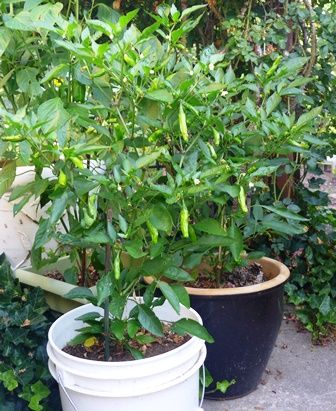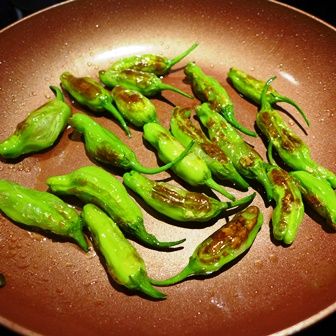
I’m not much for following trends, but I was intrigued by the buzz about Shishito peppers this season. I saw them pop up in both gardening and food articles, so I had to find out for myself.
These tasty little peppers certainly live up to their hype.
I was especially pleased to see the peppers I’m growing in three patio pots selling 6 peppers for $1 at the farmers market. At that price, I’d have earned back the few bucks I invested in a packet of Baker Creek Heirloom Seeds after the very first harvest.
These Shishito peppers are the big winners in my vegetable garden this year. No insect pests messed with the foliage or fruit, the seeds were easy to start, plants grew tall quickly and they have produced peppers galore. The saying, “If you keep picking them, they’ll keep producing” is especially true of these fruits.
This old Japanese pepper variety produces 3-inch bright green peppers with a super thin skin and absolutely no heat. The wrinkled exterior adds texture and helps when cooking these sweet little gems.
I’ve followed the foodie crowd and used the most common method for preparing them:
- Harvest peppers with clippers or scissors, leaving a long stem.
- Wash, dry and place peppers in a sauté pan with a little bit of olive oil.
- Sauté over medium heat for about 5 minutes on each side or until nicely browned. Don’t rush the process or the peppers can split and splatter and the skin can turn black.
- Remove from the heat; sprinkle with kosher salt and serve immediately. Eat the peppers whole with only the stems left behind.
Between two of us, we can polish off a panful of peppers in one sitting – or standing at the kitchen counter to enjoy them while they’re hot.
I’ve seen these peppers prepared in other ways, too. Some cooks have used a tempura batter to coat them before frying. Others have strung them on shish kabob skewers with shrimp and other vegetables for the grill.
Because I have so many peppers to use, I’m going to experiment with pickling them in a light brine, similar to pickled jalapeno peppers.
These easy-to-grow pepper plants grew more than 2 feet tall in containers. I transplanted them outside after starting the seeds indoors about 10 weeks before they were ready to harden off and plant. As with other pepper plants, they needed consistent applications of water and plant food, especially when plants started flowering and fruiting.
If the weather holds, it looks like the last flush of peppers will have the chance to turn from green to bright red before the first frost.



















Comments
Log in or create an account to post a comment.
Sign up Log in